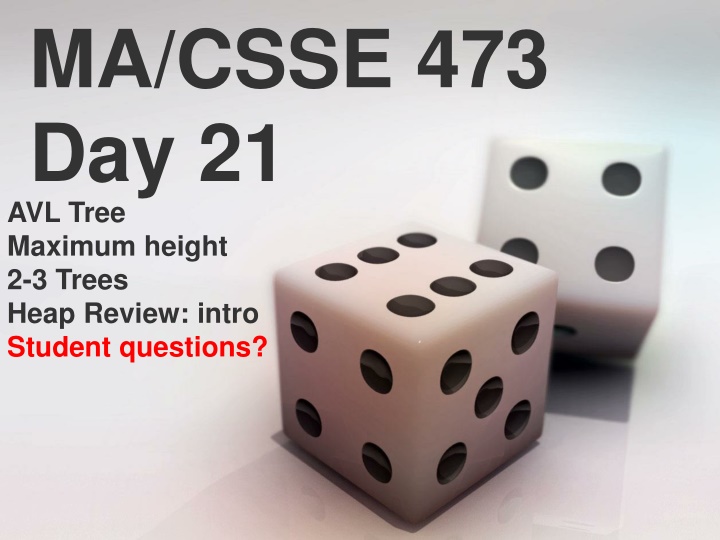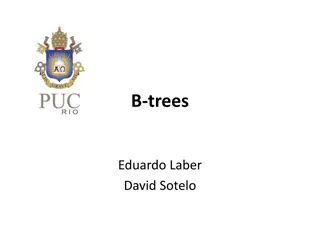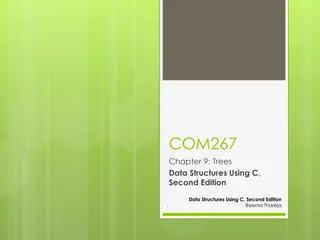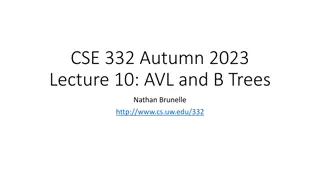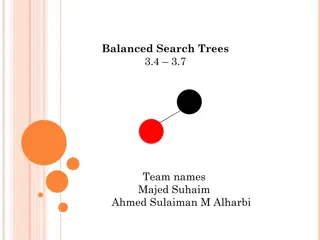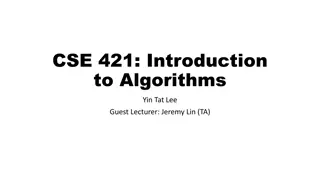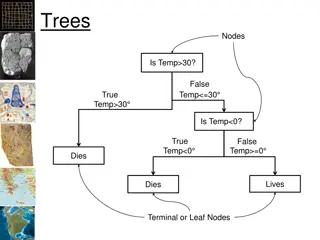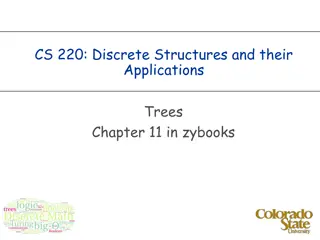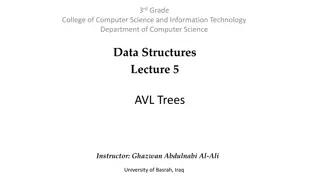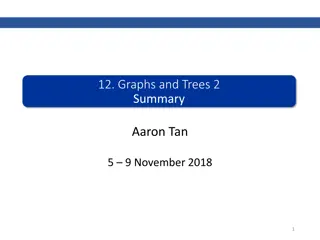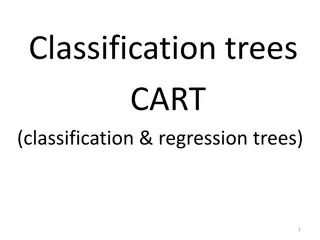AVL Trees: Height Balancing and Efficiency
In this content, we delve into AVL trees, discussing their key features such as height balance, maximum height, and maintenance of balance after insertion. We also explore 2-3 trees and binary max heaps, examining their insertion methods, efficiency, and representation changes. Through visual aids and examples, you will gain a comprehensive understanding of these data structures. Discover how AVL trees, 2-3 trees, and binary max heaps play crucial roles in efficient data management and algorithm optimizations.
Download Presentation

Please find below an Image/Link to download the presentation.
The content on the website is provided AS IS for your information and personal use only. It may not be sold, licensed, or shared on other websites without obtaining consent from the author.If you encounter any issues during the download, it is possible that the publisher has removed the file from their server.
You are allowed to download the files provided on this website for personal or commercial use, subject to the condition that they are used lawfully. All files are the property of their respective owners.
The content on the website is provided AS IS for your information and personal use only. It may not be sold, licensed, or shared on other websites without obtaining consent from the author.
E N D
Presentation Transcript
MA/CSSE 473 Day 21 AVL Tree Maximum height 2-3 Trees Heap Review: intro Student questions?
Review: Representation change: AVL Trees (what you should remember ) Named for authors of original paper, Adelson-Velskii and Landis (1962). An AVL tree is a height-balanced Binary Search Tree. A BST T is height balanced if T is empty, or if | height( TL ) - height( TR ) | 1, and TL and TR are both height-balanced. Show: Maximum height of an AVL tree with N nodes is (log N) How do we maintain balance after insertion? Exercise for later: Given a pointer to the root of an AVL tree with N nodes, find the height of the tree in log N time Details on balance codes and various rotations are in the CSSE 230 slides that are linked from the schedule page. Let's review that together
Representation change: 2-3 trees Another approach to balanced trees Keeps all leaves on the same level Some non-leaf nodes have 2 keys and 3 subtrees Others are regular binary nodes.
2-3 tree insertion example More examples of insertion: http://www.cs.ucr.edu/cs14/cs14_06win/slides/2- 3_trees_covered.pdf http://slady.net/java/bt/view.php?w=450&h=300 Add 10, 11, 12, to the last tree
Efficiency of 2-3 tree insertion Upper and lower bounds on height of a tree with n elements? Worst case insertion and lookup times is proportional to the height of the tree.
2-3 Tree insertion practice Insert 84 into this tree and show the resulting tree
2-3 Tree insertion practice Insert 84 into this tree and show the resulting tree
Binary (max) Heap Quick Review Representation change example See also Weiss, Chapter 21 (Weiss does min heaps) An almost-complete Binary Tree All levels, except possibly the last, are full On the last level all nodes are as far left as possible No parent is smaller than either of its children A great way to represent a Priority Queue Representing a binary heap as an array:
Insertion and RemoveMax Insertion: Insert at the next position (end of the array) to maintain an almost-complete tree, then "percolate up" within the tree to restore heap property. RemoveMax: Move last element of the heap to replace the root, then "percolate down" to restore heap property. Both operations are (log n). Many more details (done for min-heaps): http://www.rose- hulman.edu/class/csse/csse230/201230/Slides/18- Heaps.pdf
Heap utilitiy functions Code is on-line, linked from the schedule page
HeapSort Arrange array into a heap. (details next slide) for i = n downto 2: a[1] a[i], then "reheapify" a[1]..a[i-1]
Recap: HeapSort: Build Initial Heap Two approaches: for i = 2 to n percolateUp(i) for j = n/2 downto 1 percolateDown(j) Which is faster, and why? What does this say about overall big-theta running time for HeapSort?
